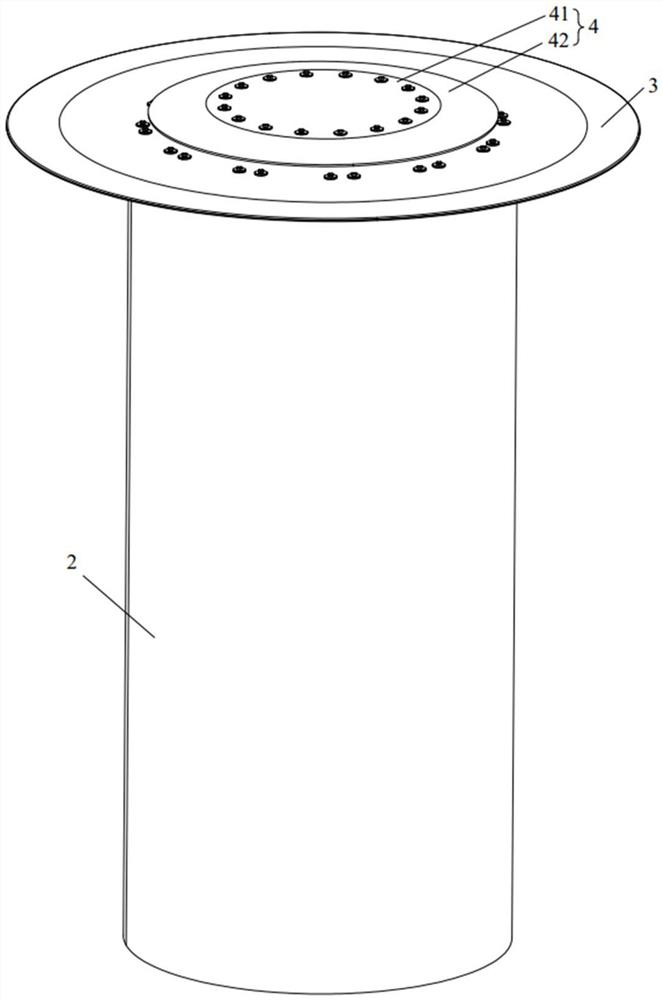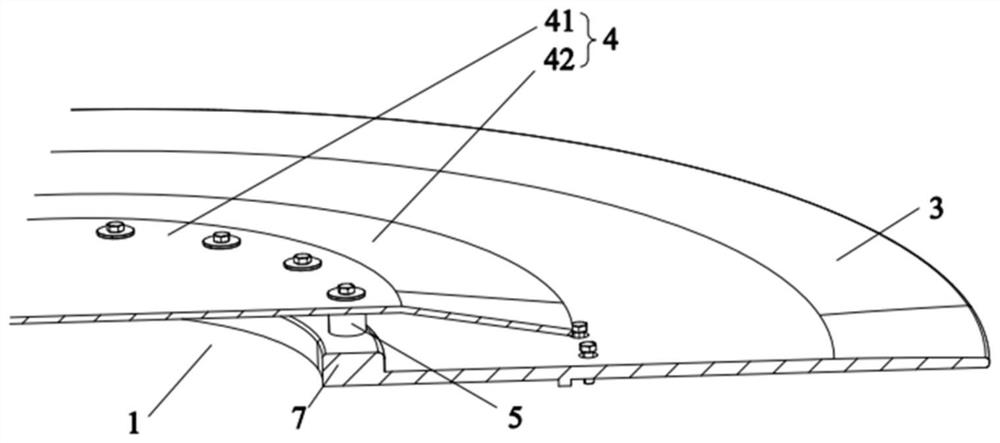Wind power boosting rotor ventilation and heat dissipation device
A technology for ventilation, heat dissipation and boosting, which is applied in cooling/ventilation devices, cooling/ventilation/heating renovation, pump devices, etc., and can solve the problems that affect the continuous operation of the rotor, affect the stability of the motor, and complex heat dissipation schemes.
- Summary
- Abstract
- Description
- Claims
- Application Information
AI Technical Summary
Problems solved by technology
Method used
Image
Examples
Embodiment 1
[0045] like figure 1 As shown, this embodiment provides a wind-assisted rotor ventilation and heat dissipation device, and the wind-assisted rotor ventilation and heat dissipation device includes a cylinder body 2 , a top cover 3 and a rain shield 4 . Specifically, such as figure 2 and image 3 As shown, the top cover 3 is covered and arranged on the top of the cylinder body 2 , and the manhole 1 is opened on the top cover 3 , and the manhole 1 communicates with the inner cavity of the cylinder body 2 . The rain shielding plate 4 is covered and arranged above the manhole 1, and the rain shielding plate 4 and the top cover 3 are spaced apart to form a heat dissipation gap communicated with the outside atmosphere. like Figure 4 As shown, in this embodiment, by setting the wind-assisted rotor ventilation and heat dissipation device, the heat inside the cylinder body 2 is dissipated to the outside atmosphere through the heat dissipation gap under the action of the exhaust fan...
Embodiment 2
[0053] This embodiment proposes a wind-assisted rotor ventilation and heat dissipation device, such as Figure 5 and Image 6 As shown, the difference between the wind-assisted rotor ventilation and heat dissipation device and the wind-assisted rotor ventilation and heat-radiation device in the first embodiment is only that the wind-assisted rotor ventilation and heat dissipation device in this embodiment has a reinforcing component 6 .
[0054] In order to further improve the structural strength of the flashing board 4 to cope with bad weather, the wind-assisted rotor ventilation and heat dissipation device in this embodiment may further include a reinforcement assembly 6 . like Figure 5 and Image 6 As shown, the reinforcement assembly 6 is provided on the lower surface of the flasher 4 between the flasher 4 and the top cover 3 . Specifically, as Figure 7 As shown, the reinforcing assembly 6 includes an inner lining plate 61 and a reinforcing rib 62, and the inner lini...
PUM
 Login to View More
Login to View More Abstract
Description
Claims
Application Information
 Login to View More
Login to View More - R&D
- Intellectual Property
- Life Sciences
- Materials
- Tech Scout
- Unparalleled Data Quality
- Higher Quality Content
- 60% Fewer Hallucinations
Browse by: Latest US Patents, China's latest patents, Technical Efficacy Thesaurus, Application Domain, Technology Topic, Popular Technical Reports.
© 2025 PatSnap. All rights reserved.Legal|Privacy policy|Modern Slavery Act Transparency Statement|Sitemap|About US| Contact US: help@patsnap.com



